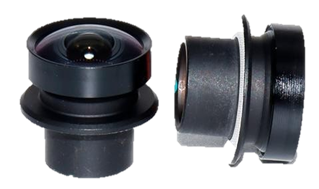What Are You Looking For?
What Are You Looking For?
Tel : 86 153-0268-9906
Email : yorty@yuntal.com
Wintop Optics: Embracing Innovation with AA Gluing Technology
May 24, 2024
In the packaging process of the camera lens module, it is usually necessary to go through multiple assemblies. However the accumulation of errors in each assembly can lead to more and more product problems. Traditional threaded combination lenses cannot adjust for these errors, and the final result may cause the captured image to deviate from the center of the picture, resulting in differences in clarity in different areas.
This article will introduce the new lens assembly technology - AA gluing technology - through the following eight aspects:
1. Introduction to AA Gluing Lens/ AA Bonding Lens Technology
2. The Role of AA Gluing / Bonding in Vehicle Imaging Systems
3. Advantages Over Traditional Bonding Methods
4. The Demands of the Imaging Industry
5. Manufacturing Process
6. AA Lenses Cases
7. Future Trends and Outlook
8. Conclusion
1. Introduction to AA Gluing / AA Bonding Technology
3. Advantages Over Traditional Bonding Methods
A. High-precision imaging: Autonomous driving and ADAS systems rely on accurate image data to make quick decisions. AA gluing lens technology meets the high-precision imaging needs of autonomous driving by precisely aligning lens elements to ensure image clarity and accuracy.
B. Dynamic environment adaptability: Vehicles encounter various dynamic changing environments during driving. AA gluing lens technology can ensure that the lens maintains stability under high-speed movement and vibration conditions, thus providing continuous and reliable image data.
C. Reliability and durability: ADAS systems need to work stably in a variety of climates and environmental conditions. Because of its high reliability and durability, AA glue structures lens can ensure long-term stable operation of imaging systems and reduce maintenance costs.
D. Fast response time: For autonomous driving systems, fast response is essential. AA gluing lens technology enables fast image capture and processing, helping the system respond in a timely manner.
Wintop Optics' AA gluing lenses technology meets the high demands of this industry by providing lenses that are not only precise but also adaptable to various environmental conditions and capable of seamless integration with other sensors.
5. Manufacturing Process
1) Cleaning: Cleaning the surface of the lens and front case to increase the adhesion of the glue.
2) Point UV glue: Through the camera and electronic balance, monitor the width, height, weight of the glue, and whether there are problems such as glue breakage.
3) Active alignment: tilt and level alignment through a 6-axis motion platform with a target map.
4) UV pre-curing: ensure the consistency of UV capabilities around.
5) High temperature baking and curing: After UV curing, the product needs to be cured again by high temperature baking.
Wintop Optics Lens Manufacturer has several successful case studies showcasing the application of AA gluing technology in automotive imaging products. For instance, YT-7065/YT-7066 is vehicle panoramic / surround view camera lens with AA adhesive structure. The YT-7600/YT-7612 vehicle imaging lenses, used in Driver Monitoring Systems and Occupant Monitoring Systems (DMS/OMS), and the YT-7610/YT-7605, widely applied in vehicle side-view cameras and intelligent assistance driving systems (ADAS), are all examples of AA bonding technology in action.

Wintop Optics' adoption of AA bonding technology underscores its commitment to innovation and excellence in the automotive imaging industry. The company's focus on continuous technological innovation is vital for meeting the evolving market demands. Wintop Optics is dedicated to developing high-performance, high-quality optical imaging lenses that cater to the needs of clients worldwide.